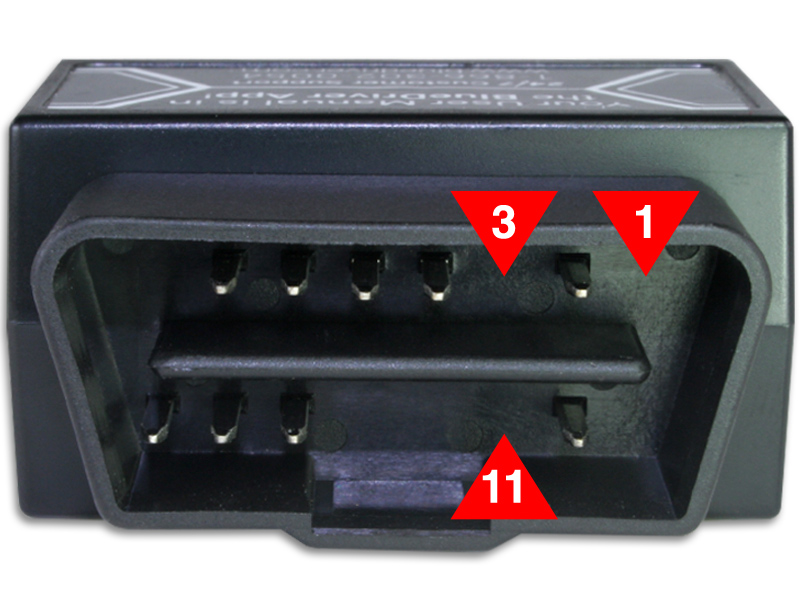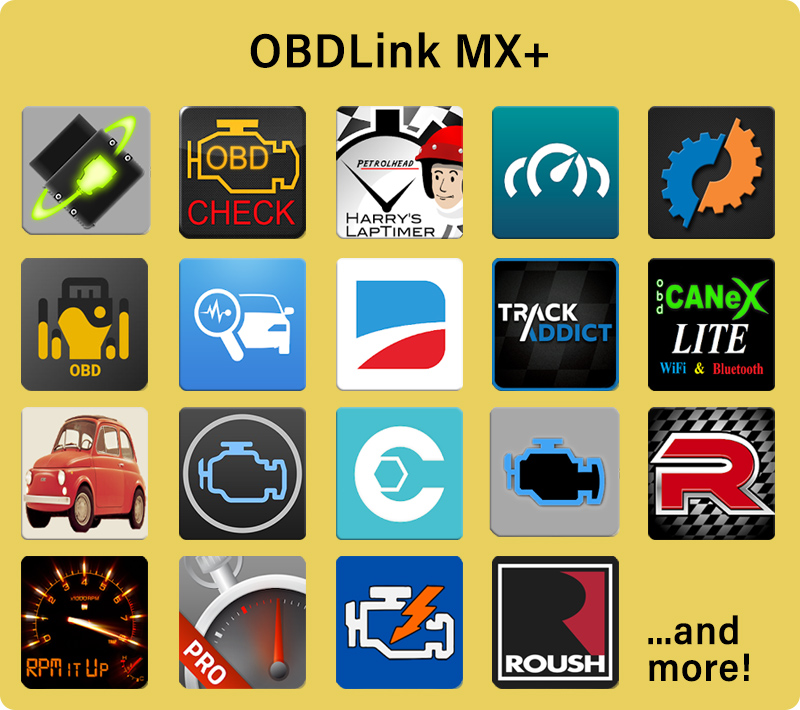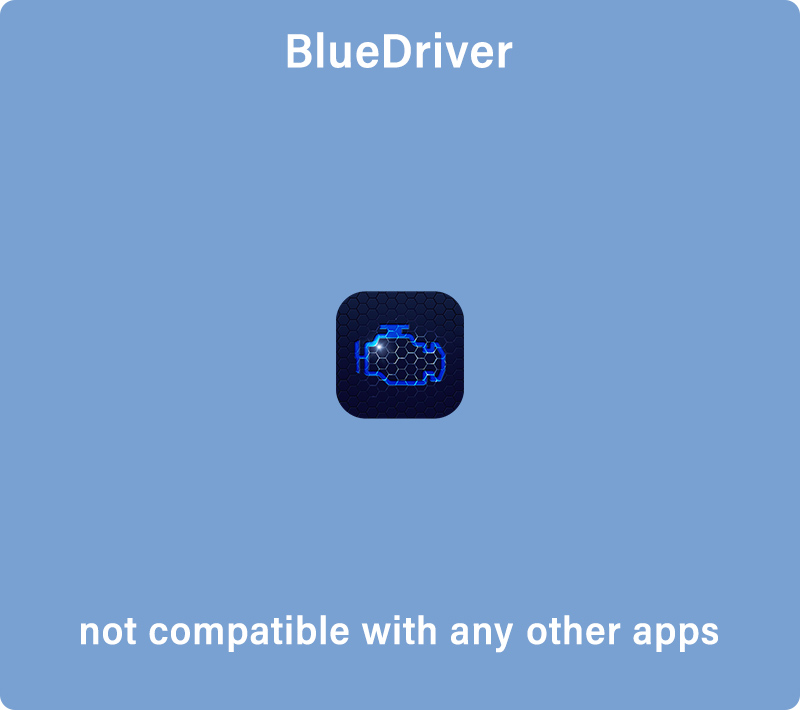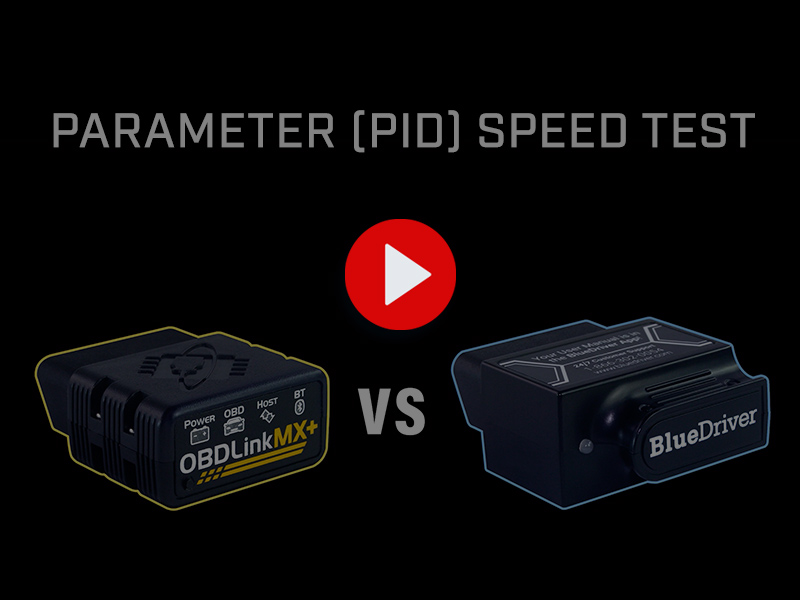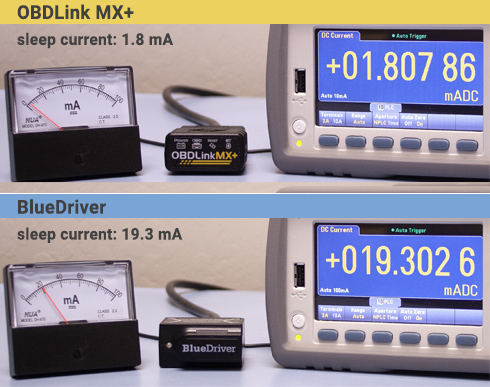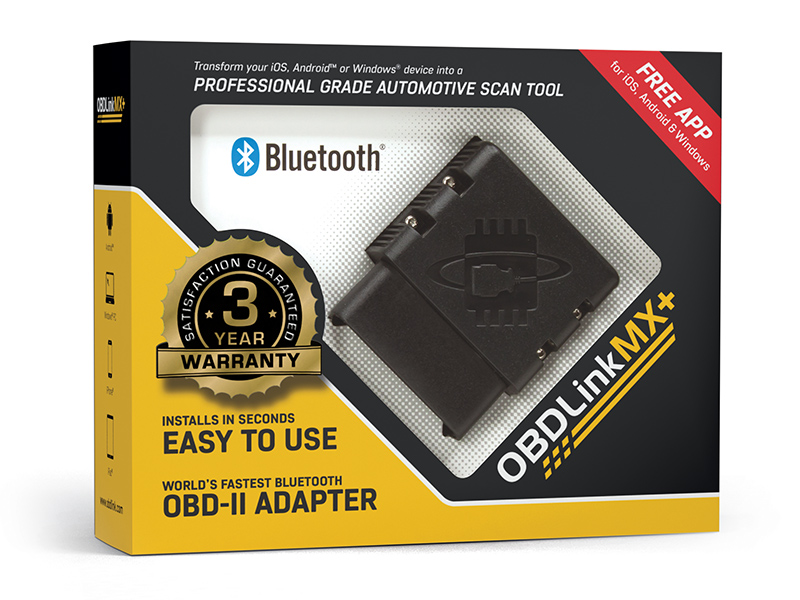OBDLink MX+ vs BlueDriver®

Which scan tool is best: OBDLink® MX+ or BlueDriver®? To answer this question, we will compare the Bluetooth OBD adapters across the following categories:
• Enhanced OEM Diagnostics
• Sampling Rate
• Over-voltage Protection
• OBD App Support
• Battery Drain Protection
• Warranty

The usefulness of a scan tool is determined to a large extent by the amount of enhanced data that it can display. “Enhanced OEM diagnostics” refers to manufacturer-specific information that is not available over generic OBD-II. It can be roughly broken down into two categories:
- Enhanced trouble codes (e.g., ABS, Airbag, HVAC)
- Enhanced parameters (e.g., transmission temperature, tire pressure, wheel speed)
| MX+® | BlueDriver® | |
| Generic OBD-II | Yes | Yes |
| OEM DTCs | Yes | limited support |
| OEM Live Parameters | Yes* | No |
| GM SW-CAN | Yes | No |
| Ford MS-CAN | Yes | No |
*Reference the “Manufacturer-Specific Enhanced Diagnostics Support” for specific vehicle coverage
Both OBD adapters support generic OBD-II, but that is where the similarities end.
While BlueDriver® can read some OEM diagnostic trouble codes (DTCs) it cannot read any OEM live parameters. If you want to monitor transmission temperature, tire pressure or any of the thousands of OEM parameters, you’re out of luck with BlueDriver®.
Another major disadvantage of BlueDriver® is its inability to access GM and Ford manufacturer-specific networks, because it lacks the necessary hardware (pins 1, 3, and 11). MX+® can communicate on both networks, providing access to thousands of DTCs and parameters that are off-limits to BlueDriver.
The network diagram for the 2015 Ford Expedition (below) helps illustrate the point:
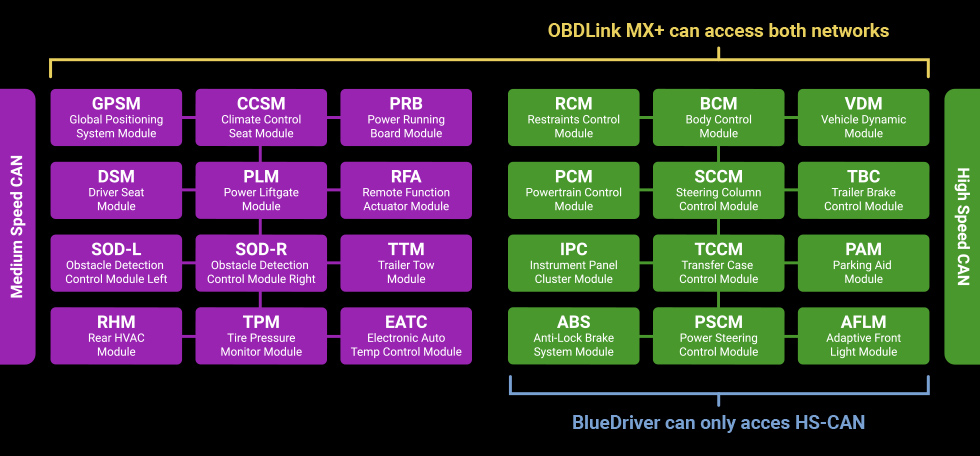
ECUs (electronic control modules) are essentially small computers that control various vehicle functions. In this example (2015 Ford Expedition) the ECUs reside on one of two vehicle networks: HS-CAN and MS-CAN. OBDLink MX+® can access modules on either network, but BlueDriver® is limited to HS-CAN, and cannot access anything on MS-CAN.

Both OBDLink MX+® and Bluedriver® ship with apps compatible with Android and iOS devices. OBDLink MX+® also includes a license for OBDwiz, a Windows-based diagnostic program.
Thanks to its open architecture, OBDLink MX+® is also supported by dozens of third-party automotive apps, greatly expanding its utility. Apps are available to perform specialized diagnostics, record lap times, display custom digital gauges, unlock enhanced performance, save fuel, change vehicle settings and even control door locks and remotely start the engine on select vehicles.
BlueDriver’s® closed architecture means users only get one choice — the app that it ships with.
| MX+® | BlueDriver® | |
| Third-party apps | Yes – Dozens of popular apps | No – BlueDriver® app only |
| iOS support | Yes | Yes |
| Android support | Yes | Yes |
| Windows support | Yes | No |

The sampling rate is an important OBD device characteristic that measures the number of samples (data points) captured per second. A high sampling rate is necessary to accurately capture fast-changing signals and monitor multiple parameters and is a must for smooth graphs and digital dashboards.
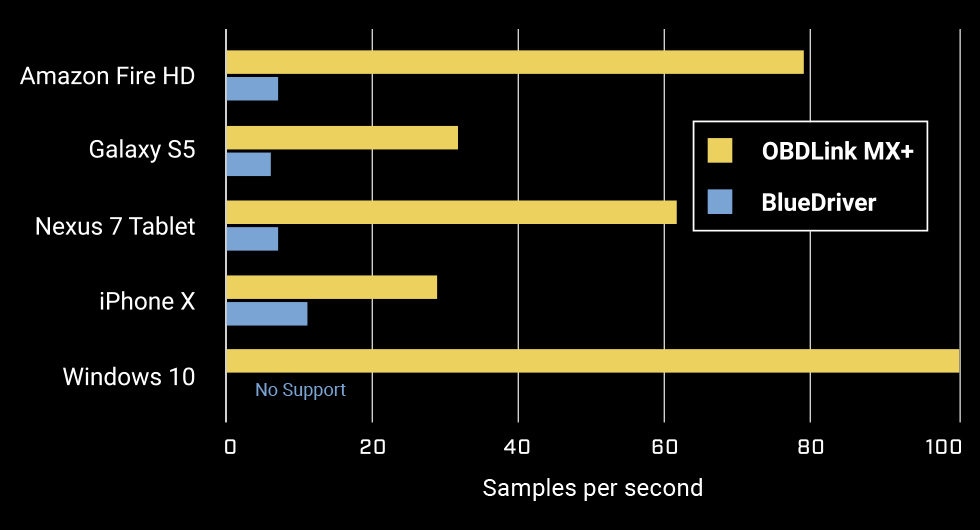
In head-to-head benchmark testing, BlueDriver’s sampling rate varied between 5 and 10 samples per second. Under the same conditions, OBDLink MX+ was up to ten times faster.

Low-power “sleep” mode is an essential feature for any OBD device advertised as “safe to leave plugged in”. When the engine is turned off, the alternator is no longer charging the battery and any significant load will eventually drain it. An intelligent scan tool should recognize this condition, quickly power down and consume the least possible amount of energy in sleep mode.
Tests revealed that BlueDriver® takes three times as long to enter lower power mode while consuming 7.5 times as much energy. Most concerning, BlueDriver® consumes 19.3 milliamperes in sleep, which is up to twice as much as the vehicle’s own parasitic current draw and ten times as much as OBDLink MX+.
| MX+® | BlueDriver® | |
| Sleep delay | 10 minutes | 30 minutes |
| Idle current | 39 mA | 73 mA |
| Sleep current | 1.8 mA | 19.3 mA |
BlueDriver’s® excessive current draw is enough to cause serious problems, as evidenced by numerous customer testimonies:
- “It caused such a bad battery drain, that my new 6-month old battery had to be replaced”
- “I didnt need to use my car for 7/8 days and when I did need to use it, the battery was dead”
- “The device, contrary to what BlueDriver says, does put a ghost load on your battery.”
- “I thought I could just leave it in the port, since it said so on its website FAQ, but it did drain my battery, so there is some parasitic drain”
- “Warning! This device is not compatible with my 2017 Mazda CX-5. It kills the battery.”
- “Wish it had a switch to power off and on. Constantly pulls from battery now if left attached.”

Devices powered from the OBD port must be designed to withstand the harsh environment of the vehicle electrical system. One of the most dangerous conditions is known as a “load dump” pulse (formally referred to as “Pulse 5a”). In automotive electronics, “load dump” refers to the high-energy voltage spike which occurs when the vehicle battery is abruptly disconnected from the alternator while it is being charged. This can happen, for example, if the battery terminals become oxidized (a surprisingly common problem).
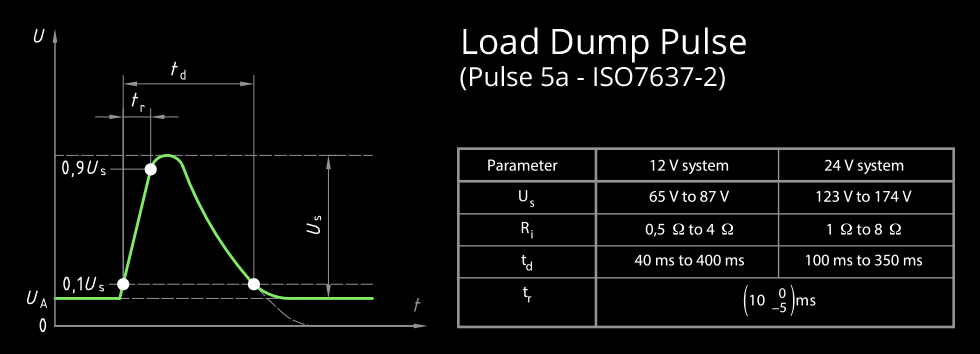
We put the BlueDriver® and OBDLink MX+® through a series of tests designed to validate the overvoltage protection circuitry. Both units were first powered from the nominal 12 volts to establish proper operation. Then, a 400-millisecond 90-volt pulse was introduced to simulate a load dump condition. MX+® survived the test, but it rendered BlueDriver® unit inoperable: the blue status LED turned off and the unit was no longer discoverable via Bluetooth.
To better understand the failure conditions and its mechanism, we replaced the BlueDriver® unit, opened it up and started to slowly ramp up the voltage. At 19 volts, the BlueDriver® started smoking and caught fire shortly after. OBDLink’s protection circuit kicked in at 18 volts and it remained fully operational when the 12-volt power was restored.
In the third and final test, OBDLink MX+® received 90 volts continuously and was able to survive it indefinitely without any ill effects. The same test caused BlueDriver’s® capacitor to explode, the circuit smoked and was no longer operational.
| MX+® | BlueDriver® | |
| 90V pulse | No damage | Permanent damage |
| Slow ramp-up, 12V to 90V | No damage | Smoke at 19 volts, caught fire, permanent damage |
| Continuous 90V | No damage | Capacitor exploded, smoke, permanent damage |
Aftermath of the slow ramp-up test: BlueDriver’s® power regulator caught fire and was completely destroyed.

OBDLink MX+® comes with triple the warranty coverage of BlueDriver®. Warranty information accurate as of September 1, 2019
| MX+ | BlueDriver® | |
| Warranty | 3 years | 1 year |

| MX+® | BlueDriver® | |
| Enhanced OEM diagnostics | DTCs and thousands of OEM parameters, access to GM and Ford proprietary networks | DTCs only; no access to GM or Ford proprietary networks |
| OBD app support | Dozens of compatible apps | One app |
| Sampling Rate | Up to 100 samples per second | Up to 10 samples per second |
| Battery drain protection | Excellent | Inadequate – sleep current too high |
| Overvoltage protection | Survives continuous 90 volts with no damage | No overvoltage protections (fails at 19 volts) |
| Warranty | 3 years | 1 year |
OBDLink® is a registered trademark of OBD Solutions.
All other trademarks and registered trademarks referred to are the property of their respective owners. iPad, iPhone, and iPod touch are trademarks of Apple Inc., registered in the U.S. and other countries. Windows® is a registered trademark of Microsoft Corporation in the U.S. and other countries. Android™ is a trademark of Google Inc. BlueDriver® is a registered trademark of Root Four Imagination Inc (Lemur Vehicle Monitors). The trademark holders are not affiliated with the maker of OBDLink® MX+™ and do not endorse this product.
